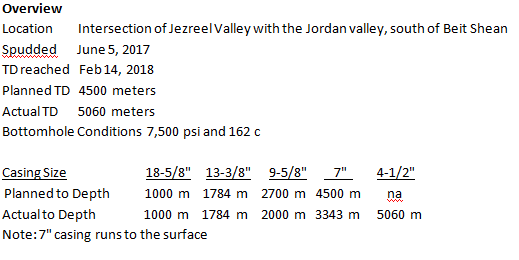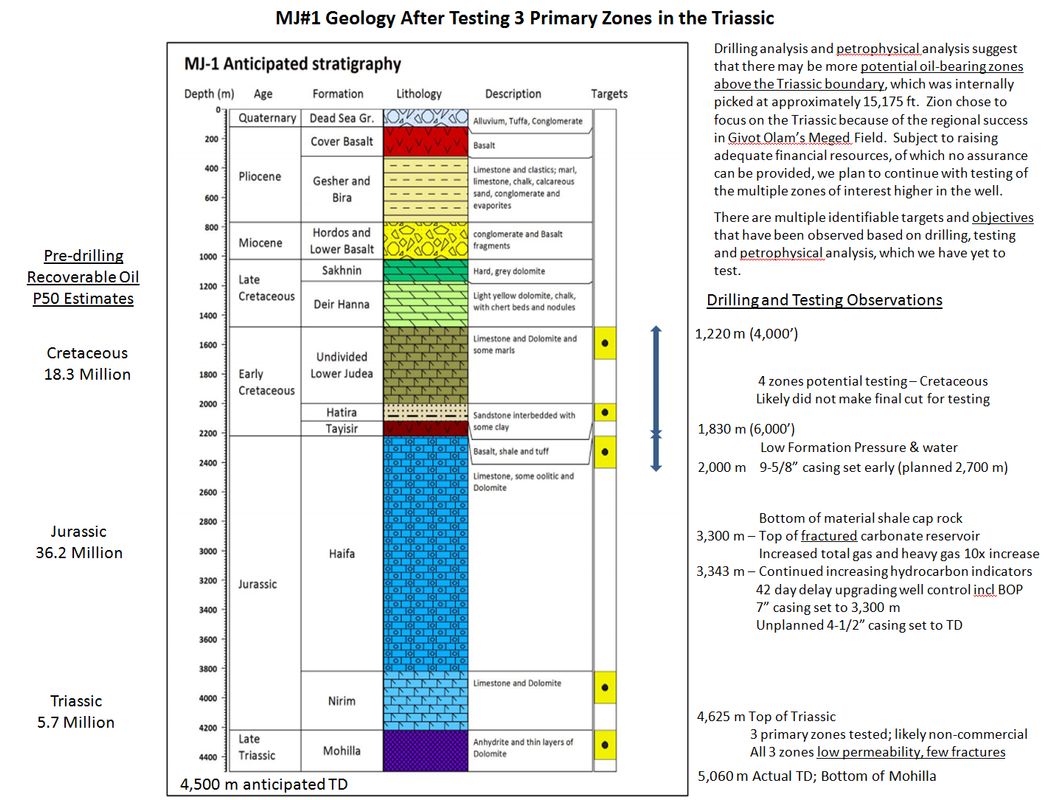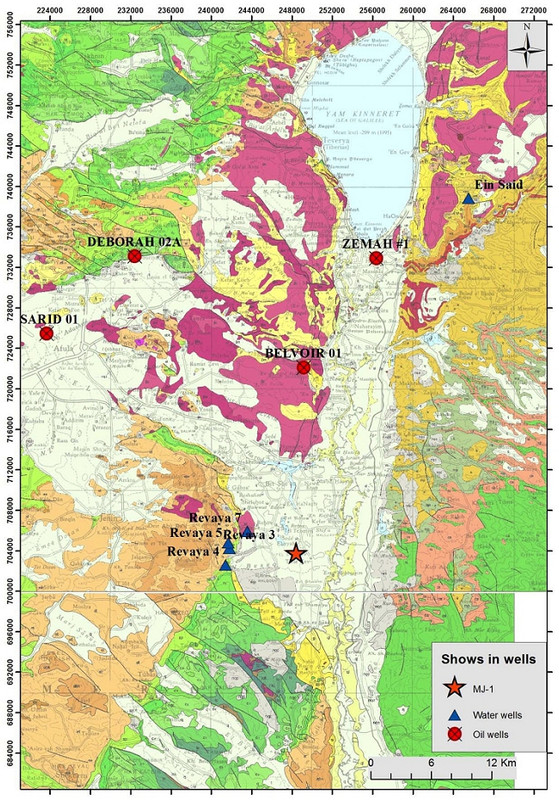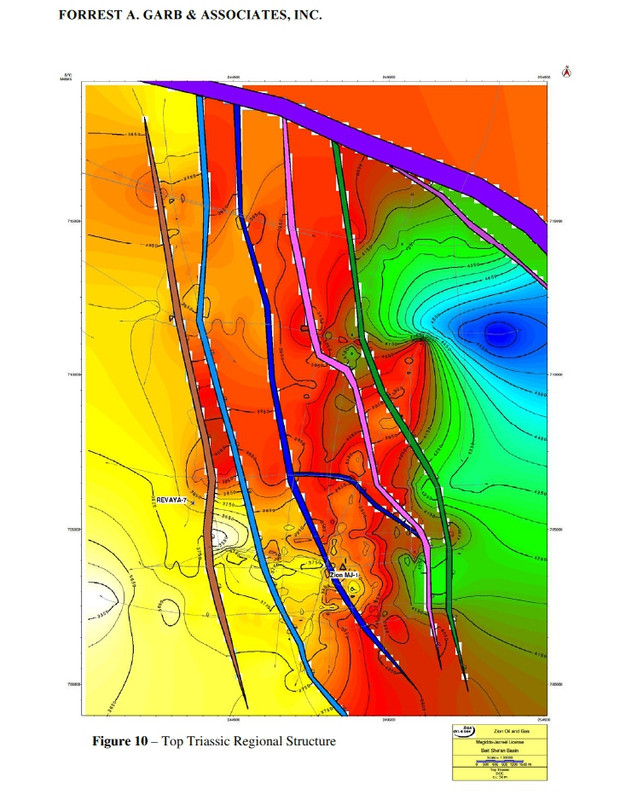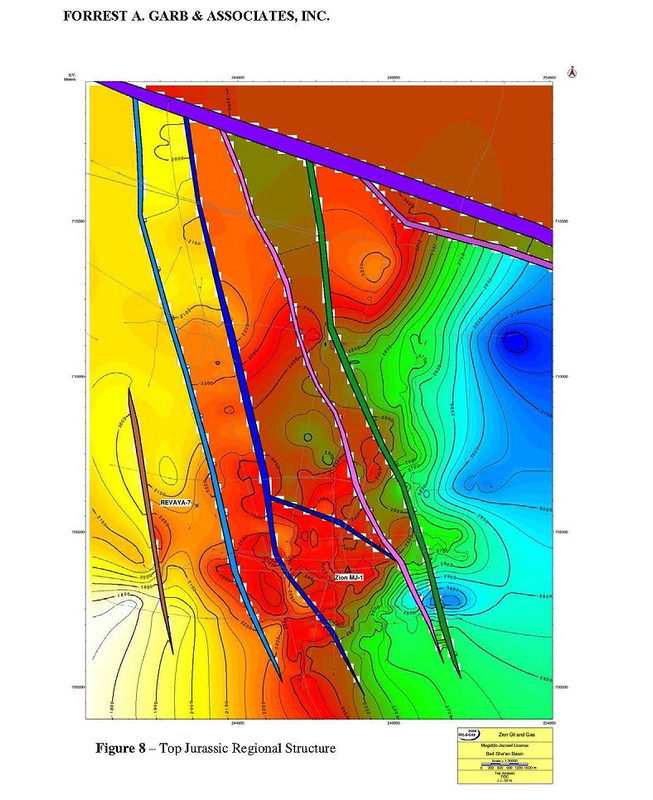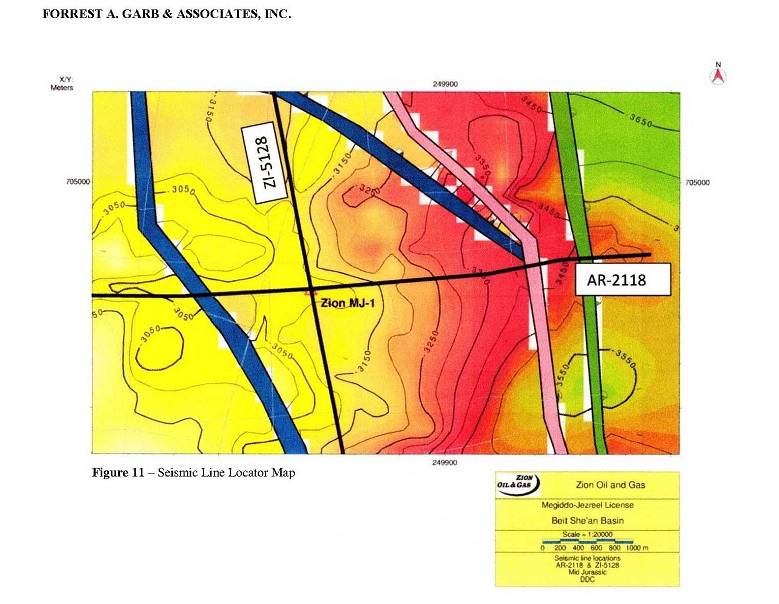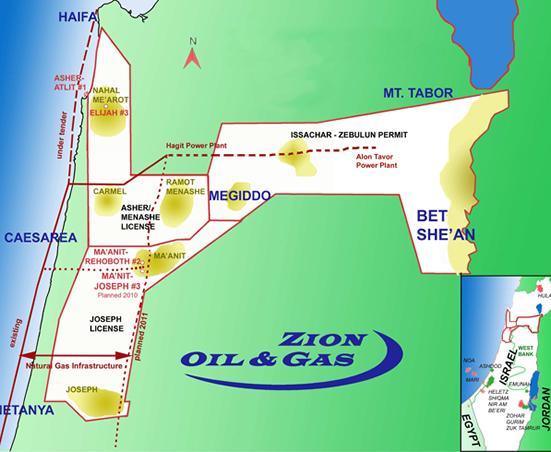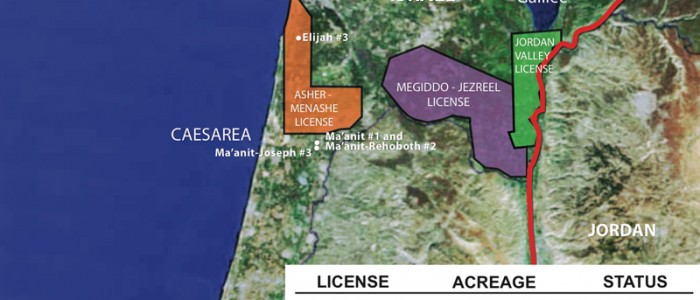Post by Ethan / JRyan on Aug 19, 2018 12:41:31 GMT -5
Here is a post from KyOil - helps somewhat explain it.
I hope KyOil is ok with me posting this.
Yes, the Nov 2017 time period was when high pressure was encountered just after drilling through a cap rock (shale) and into a reservoir rock (fractured carbonate) in the Jurassic at a depth of 3343 meters (10,970 feet). In addition to the good signs of a cap rock and fractured reservoir rock, Carrillo stated that "increased gas and heavy gas component indications an order of magnitude than previously seen..." Gas of course is at the top of a reservoir and heavy gas is things like butane and propane that indicate oil. And of course, a 10x increase gets your attention. So, the zone beginning at about 10,970 feet has a lot of potential. Not sure how far down this zone goes, but it can not go any lower than 15,125 feet because that is where the Triassic begins.
Drilling was on hold for 42 days waiting on a well control upgrade which included a new BOP. The drilling pause was announced 11/2/2017.
Packers are very expensive and if you pay enough they should be able to survive the 162 c bottom hole temperature. I don't know why ZN choose the packers they did. It might have been cost or availability, or maybe they thought the selected ones would last longer than they did. Packers can be a particularly troublesome device. They have to withstand very high pressure because they isolate the acid which is injected into the formation at higher than formation pressures. With MJ#1 formation at 7,500 psi I would not be surprised if the acid pressure was 10,000 psi at the bottom. Not only pressure from the acid, but the acid interacts with some packer materials. And of course the heat. So, the packer is in an environment of very high pressure, very high heat, and has to hold acid. My experience is that packers are the most unreliable downhole device.
The same parameters that make drilling an oil difficult are the same ones that are necessary for oil and gas! High pressure for instance. Without pressure you don't have production. But pressure makes drilling safely very difficult. High temperature with depth is a necessary condition for making hydrocarbons. Temperature gets hotter with depth and in the last PR Dustin referred to MJ#1 have a favorable Thermal Gradient. Fractured carbonates are great reservoirs for creating space to hold hydrocarbons and to provide a path to the wellbore. But, they can make drilling difficult as was the case in the upper Jurassic.
Lower Cretaceous estimated from 1220 meters to 1830 meters (4,000 to 6,000 ft). In 10/12/2017 PR Carrillo said there were 4 zones of interest for perhaps production testing. Obviously, all 4 zones did not make the final cut, but the Cretaceous might have one secondary test zone. Remember the videos of logs with "hydrocarbons" written on them? I believe that was in the Cretaceous.
Since the Jurassic zone of interest starts at 10,970 feet, it would take about 2/3 of the time as it would to travel to the bottom where the Triassic zones are. Maybe 2/3 of the temperature too, which would really assist with packer lifetime. So, less trips and less time per trip to test in the Jurassic than the Triassic.
Sounds like they were about the give up on swabbing the Triassic when the PR was released Thur night. Since the well is idle over Shabbat, they might have waited to see what gas and fluids build up over Shabbat and if nothing encouraging then move on to the Jurassic.
The Triassic was compelling to test because of the Givot Olam well 25 miles away which had oil there. But, looking at the drill and log data from MJ#1 as reported, I would have to say that the Jurassic has more potential. The pay zone height is unknown publicly, but there is 4,000 ft from the Jurassic cap rock to the Triassic. That is a lot of distance to have potential deep zones located in.
Pressure - Jurassic high, Triassic normal.
Reservoir - Jurassic naturally fractured, Triassic low permeability and no natural fractures.
Pay Zone - Jurassic , Triassic zone 1 = 85'; zones 2&3 = 130'
, Triassic zone 1 = 85'; zones 2&3 = 130'
Drilling was on hold for 42 days waiting on a well control upgrade which included a new BOP. The drilling pause was announced 11/2/2017.
Packers are very expensive and if you pay enough they should be able to survive the 162 c bottom hole temperature. I don't know why ZN choose the packers they did. It might have been cost or availability, or maybe they thought the selected ones would last longer than they did. Packers can be a particularly troublesome device. They have to withstand very high pressure because they isolate the acid which is injected into the formation at higher than formation pressures. With MJ#1 formation at 7,500 psi I would not be surprised if the acid pressure was 10,000 psi at the bottom. Not only pressure from the acid, but the acid interacts with some packer materials. And of course the heat. So, the packer is in an environment of very high pressure, very high heat, and has to hold acid. My experience is that packers are the most unreliable downhole device.
The same parameters that make drilling an oil difficult are the same ones that are necessary for oil and gas! High pressure for instance. Without pressure you don't have production. But pressure makes drilling safely very difficult. High temperature with depth is a necessary condition for making hydrocarbons. Temperature gets hotter with depth and in the last PR Dustin referred to MJ#1 have a favorable Thermal Gradient. Fractured carbonates are great reservoirs for creating space to hold hydrocarbons and to provide a path to the wellbore. But, they can make drilling difficult as was the case in the upper Jurassic.
Lower Cretaceous estimated from 1220 meters to 1830 meters (4,000 to 6,000 ft). In 10/12/2017 PR Carrillo said there were 4 zones of interest for perhaps production testing. Obviously, all 4 zones did not make the final cut, but the Cretaceous might have one secondary test zone. Remember the videos of logs with "hydrocarbons" written on them? I believe that was in the Cretaceous.
Since the Jurassic zone of interest starts at 10,970 feet, it would take about 2/3 of the time as it would to travel to the bottom where the Triassic zones are. Maybe 2/3 of the temperature too, which would really assist with packer lifetime. So, less trips and less time per trip to test in the Jurassic than the Triassic.
Sounds like they were about the give up on swabbing the Triassic when the PR was released Thur night. Since the well is idle over Shabbat, they might have waited to see what gas and fluids build up over Shabbat and if nothing encouraging then move on to the Jurassic.
The Triassic was compelling to test because of the Givot Olam well 25 miles away which had oil there. But, looking at the drill and log data from MJ#1 as reported, I would have to say that the Jurassic has more potential. The pay zone height is unknown publicly, but there is 4,000 ft from the Jurassic cap rock to the Triassic. That is a lot of distance to have potential deep zones located in.
Pressure - Jurassic high, Triassic normal.
Reservoir - Jurassic naturally fractured, Triassic low permeability and no natural fractures.
Pay Zone - Jurassic
 , Triassic zone 1 = 85'; zones 2&3 = 130'
, Triassic zone 1 = 85'; zones 2&3 = 130' If they used HCL in MJ#1, it is heavier than brine water so will go to the bottom. Water would not be a problem if they set a packer just below the perf zone, injected HCL under enough pressure to displace the fluid in the wellbore, then closed the upper packer, then increased the HCL pressure to drive it into the rock. I don't know what SG drill fluid they used to know if this would work for mud or not. But it's ideal if the HCL has direct access to the rock when it's pressurized. Don't want drill mud or water keeping it from contacting the rock.
If a marked increase in water is observed just after perfing and before acid, then you've got problems. The perf opened up vertical communication between the pay zone and a water zone. And it can not be solved with casing. The water cut is now higher and the well may not be profitable.
After acid, the water will increase dramatically due to the chemical reaction of the acid with limestone. It will begin to decay fairly quickly, but its tense moments watching it because acid can also open up a vertical path to a water zone.
A successful acid job is oil flow increased and water increased in the same proportion or less. If it goes the other way you wonder why you paid the service rig to ruin your well! It's actually not usually their fault, just the way the rock behaves.
If a marked increase in water is observed just after perfing and before acid, then you've got problems. The perf opened up vertical communication between the pay zone and a water zone. And it can not be solved with casing. The water cut is now higher and the well may not be profitable.
After acid, the water will increase dramatically due to the chemical reaction of the acid with limestone. It will begin to decay fairly quickly, but its tense moments watching it because acid can also open up a vertical path to a water zone.
A successful acid job is oil flow increased and water increased in the same proportion or less. If it goes the other way you wonder why you paid the service rig to ruin your well! It's actually not usually their fault, just the way the rock behaves.
I hope KyOil is ok with me posting this.



